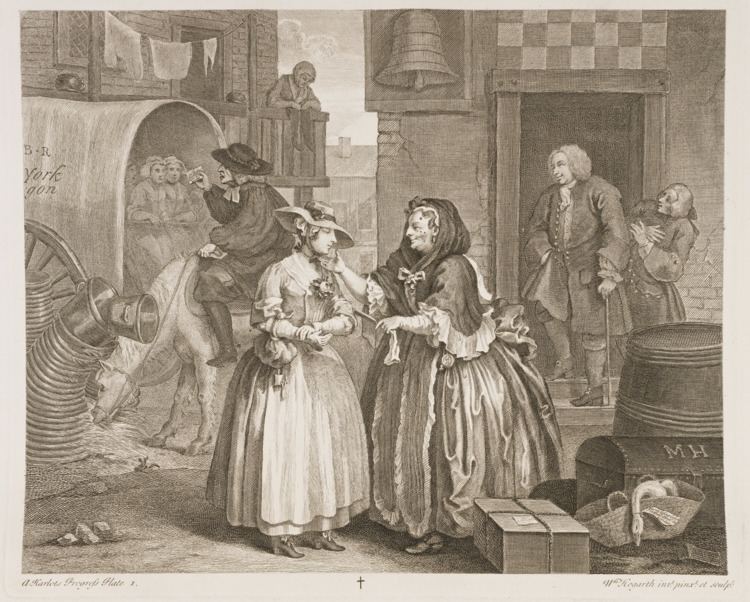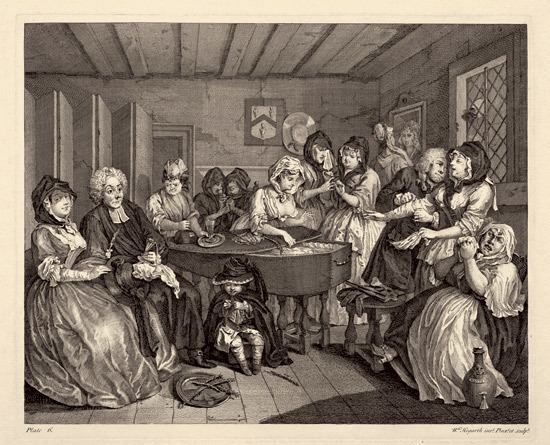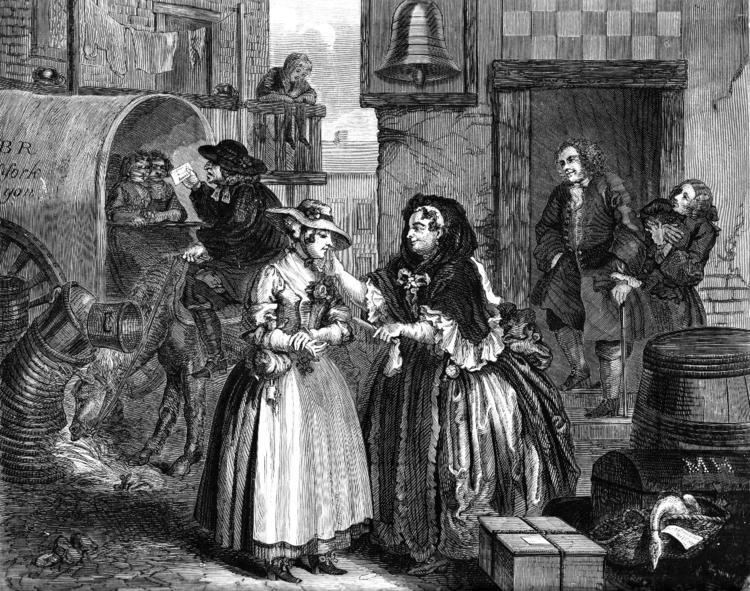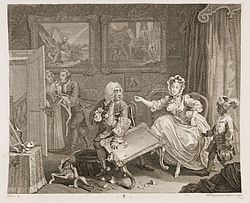Created 1732 | ||
 | ||
William Hogarth artwork Four Times of the Day, Beer Street and Gin Lane, The Shrimp Girl, The Enraged Musician, The Gate of Calais | ||
A Harlot's Progress (also known as The Harlot's Progress) is a series of six paintings (1731, now destroyed) and engravings (1732) by the English artist William Hogarth. The series shows the story of a young woman, M. (Moll or Mary) Hackabout, who arrives in London from the country and becomes a prostitute. The series was developed from the third image: having painted a prostitute in her boudoir in a garret on Drury Lane, Hogarth struck upon the idea of creating scenes from her earlier and later life. The title and rich allegory are reminiscent of John Bunyan's Pilgrim's Progress.
Contents

In the first scene, an old woman praises her beauty and suggests a profitable occupation, procuring her for the gentleman shown towards the back of the image. She is a mistress with two lovers in the second, has become a common prostitute on the point of being arrested in the third, and is beating hemp in Bridewell Prison in the fourth. By the fifth, she is dying from venereal disease, and she is dead aged only 23 in the last.

History

The protagonist "M. Hackabout" (see Plate 1, Plate 3, and the coffin-lid in Plate 6, which reads: "M. Hackabout Died Sepr 2d 1731 Aged 23") is either named after the heroine of Moll Flanders and Kate Hackabout or ironically after the Blessed Virgin Mary. Kate was a notorious prostitute and the sister of highwayman Francis Hackabout: he was hanged on 17 April 1730; she was convicted of keeping a disorderly house in August the same year, having been arrested by Westminster magistrate Sir John Gonson.

The series of paintings proved to be very popular and Hogarth used his experience as an apprentice to a silversmith to create engravings of the images, selling a "limited edition" of 1,240 sets of six prints to subscribers for a Guinea. Pirate copies of the engravings were soon in circulation, and Hogarth procured a 1735 Act of Parliament (8 Geo. II. cap. 13) to prohibit the practice. Soon after, Hogarth published his second series of satirical and moralistic images, A Rake's Progress, followed some years later by Marriage à-la-mode.
The original paintings were destroyed in a fire at Fonthill House in 1755, the country house of William Beckford (1709–1770), a politician and father of William Thomas Beckford (1 October 1760 – 2 May 1844) builder of Fonthill Abbey in Wiltshire. The original plates survived, and were sold by Hogarth's widow, Jane, to John Boydell in 1789; by him to Baldwin, Cradock and Joy in 1818; and then to Henry Bohn in 1835. Each produced further copies.
Adaptation
British composer Iain Bell composed an operatic adaptation of the work which opened at the Theater an der Wien in Vienna in 2013 with German soprano Diana Damrau in the title role. The world premiere of the opera A Harlot's Progress was on 13 October 2013.
